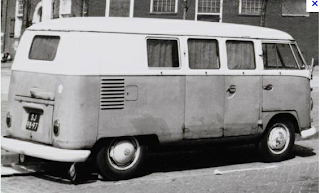You may be wondering why I am writing a
review on a 12 year old CD. My childhood friend, Leslie, Posted a
coupon on Facebook for Tedeschi's Trucks Band new CD. I figured
before I run out tomorrow and buy the latest CD I should review the
first CD that came out a little over 12 years ago.
I was driving down 101 going from San
Francisco to LA. It was warm for February in 1998, I had time to
burn. The tape deck in the Oldsmobile had quit months ago so I was
listening to the FM as I headed south om a Sunday morning. When I
got near Salinas, I had thought of taking Route 1 along the coast,
the the DJ of the Salinas radio station introduced a new CD he had
just received and he had played the first track and loved it so
much he was going to play the whole CD with out interruption.
The first song was “Rock me Right”
and boy did Susan Tedeschi's voice rock me right. I took a turn back
to head south on 101 through the Salinas Valley knowing if I took
Route 1 down the coast, the mountains would block the radio signal
after just 10 minutes. All of a sudden I was transported back to
1969 a rainy day Friday August 14th I played
hooky from school, something I never did, but this was a special occasion. The
greatest bands and artist of the time were going to be in a place I
could drive to in upstate New York, Woodstock. I pointed my little red
Alfa Romeo south to make the 300 mile trip To Woodstock , a town that is
actually fairly close to the major metropolitan areas of New York,
Connecticut and Massachusetts. It had been Raining for days but I was
hopeful that the rain would stop.

What a contrast from the weather I was
having in California. 75 degrees sunny and with a slight breeze from
the Pacific. "Rock me Baby" made me think of Janice Joplin, but in a
polished control and trained way. Susan still had a slight edge to her voice but it was definitely not the drug induced, who gives a F, that
Janice had that made 17 year old boys like me me shiver at the
though of that kind of woman.
Susan Tedeschi “Just Won't Burn,”
her break out album produced By Tom Hambridge who has single handed
kept the blues alive. That is a slight exaggeration but not a bold
face lie. Tom is a complete music company onto himself, has the
awards to prove it and a who's who of friends to back it up.
Susan's rendition of Hambridge's “It
Hurt So Bad” put me over the top when I heard it leaving Salinas.
Right then and there I made up my mind I had to have that CD.
The rain did not let up and a mountain
of traffic seemed to be heading to Woodstock. It was dark and dreary
with sprinkles of happiness braking out along the road with cars
stranded by the side and folks getting together to make the best of
it.
The CD's title song “It Just Won't
Burn” written by Tedeschi, not only showcases her voice and guitar
work but also her feeling for writing the blues, the lady has soul.
You can feel the passion in her voice.
I have listened to this album so much
over the years, usually as prelude to “Big Brother And the Holding
Company” . By the time “Angel From Montgomery” written by John
Prime, the radio in the Oldsmobile was having troubles staying locked
in. I stopped the car in a spot with good reception to listen
to the rest of the CD.
The road to the hamlet of White Lake in
Bethel New York where the concert was to happen was clogged with at
least half a million happy souls. The dirt road got so rutted and
muddy that I knew it was just a matter of time before the little
sports car would get high centered. I saw a clear spot on the
shoulder of the road and dove for it. Safely parked between a late
50's VW Camper Bus and a converted bread truck I made new friends and
contributed the wine I carried in exchange for food and shelter.
The last song in the Album is a
collaboration by Tedeschi and Hambridge “Friar's point” A classic
blues rift. that closed out my 45 minutes of driving and day
tripping. It is interesting how many people like me there are that
love cars and music but more so the blues "the peoples music". We could hear the concert
off in the distance as the rain continued but it did not matter as a
bunch of strangers became friends for one night and partied away
safely in the bus and the bread truck. In the morning the National Guard was offering free pulls for those that wanted to get back on
pavement. I took them up on the offer said good bye to my mates and
headed home to Plymouth New Hampshire, dropping chunks of mud on the
way. Thanks Leslie, I promise the next time I will tell you
ahead of time.













